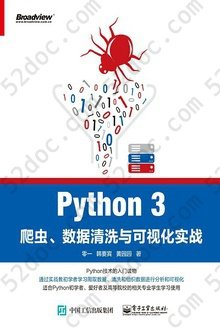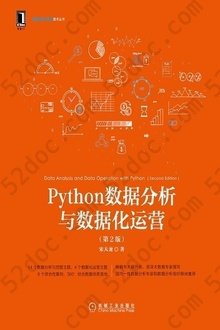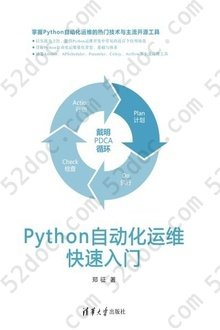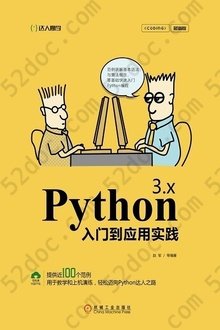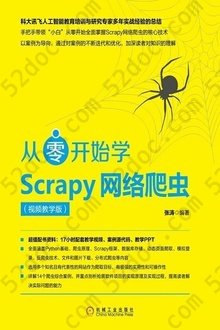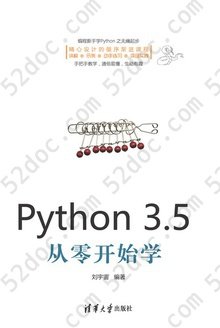注重体验与质量的电子书资源下载网站
分类于: 互联网 人工智能
简介
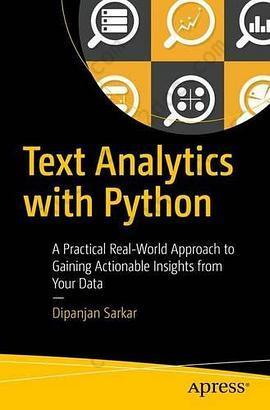
目录
Chapter 1: Natural Language Basics.-
Chapter Goal: Introduces the readers to the basics of NLP and Text processing
No of pages: 40 - 50
Sub -Topics
1. Language Syntax and Structure
2. Text formats and grammars
3. Lexical and Text Corpora resources
4. Deep dive into the Wordnet corpus
5. Parts of speech, Stemming and lemmatization
Chapter 2: Python Refresher for Text Analytics
Chapter Goal: A useful chapter for people who do not know python as well as for experienced people who can use it as a quick reference for useful commands and techniques for text processing using python
No of pages: 30 - 35
Sub - Topics
1. Python data structures and constructs
2. Functions, conditionals and code flow
3. Handling strings with Python
4. Regular Expressions with Python
5. Quick glance into nltk, gensim and pattern
Chapter 3: Text Processing
Chapter Goal: This chapter covers all the techniques and capabilities needed for processing and parsing text into easy to understand formats. We also look at how to segment and normalize text.
No of pages : 35 - 40
Sub - Topics:
1. Sentence and word tokenization
2. Text tagging and chunking
3. Text Parse Trees
3. Text normalization
4. Text spell checks and removal of redundant characters
5. Synonyms and Synsets
Chapter 4: Text Classification
Chapter Goal: Introduces readers to the concept of classification as a supervised machine learning problem and looks at a real world example for classifying text documents
No of pages: 40 - 45
Sub - Topics:
1. Classification basics
2. Types of classifiers
3. Feature generation of text documents
4. Types of feature generators
5. Building a text classifier on real world data
6. Evaluating Classifiers
7. Binary and multi-class classification models
Chapter 5: Text summarization and topic modeling
Chapter Goal: Introduces the concepts of text summarization, n-gram tagging analysis and topic models to the readers and looks at some real world datasets and hands-on implementations on the same
No of pages: 40 - 45
Sub - Topics:
1. Text summarization concepts
2. Dimensionality reduction
3. N-gram tagging models
4. Topic modeling using LDA and LSA
5. Generate topics from real world data
6. N-gram analysis to generate patterns from app reviews
Chapter 6: Text Clustering and Similarity analysis
Chapter Goal: We look at unsupervised machine learning concepts here like text clustering and similarity measures
No of pages: 35 - 40
Sub - Topics:
1. Clustering concepts
2. Analyzing text similarity
3. Implementing text similarity with cosine, jaccard measures
4. Text clustering algorithms
5. Hands on text clustering on real world data
Chapter 7: Sentiment Analysis
Chapter Goal: We look at solving a popular problem of analyzing sentiment from text using a combination of methods learnt earlier including classification and also lexical analysis
No of pages: 35 - 40
Sub - Topics:
1. What is sentiment analysis
2. Looking at lexical corpora for sentiment
3. Analyzing sentiment using lexical analysis (hands-on)
4. Building a sentiment analysis classifier (hands-on)
Chapter Goal: Introduces the readers to the basics of NLP and Text processing
No of pages: 40 - 50
Sub -Topics
1. Language Syntax and Structure
2. Text formats and grammars
3. Lexical and Text Corpora resources
4. Deep dive into the Wordnet corpus
5. Parts of speech, Stemming and lemmatization
Chapter 2: Python Refresher for Text Analytics
Chapter Goal: A useful chapter for people who do not know python as well as for experienced people who can use it as a quick reference for useful commands and techniques for text processing using python
No of pages: 30 - 35
Sub - Topics
1. Python data structures and constructs
2. Functions, conditionals and code flow
3. Handling strings with Python
4. Regular Expressions with Python
5. Quick glance into nltk, gensim and pattern
Chapter 3: Text Processing
Chapter Goal: This chapter covers all the techniques and capabilities needed for processing and parsing text into easy to understand formats. We also look at how to segment and normalize text.
No of pages : 35 - 40
Sub - Topics:
1. Sentence and word tokenization
2. Text tagging and chunking
3. Text Parse Trees
3. Text normalization
4. Text spell checks and removal of redundant characters
5. Synonyms and Synsets
Chapter 4: Text Classification
Chapter Goal: Introduces readers to the concept of classification as a supervised machine learning problem and looks at a real world example for classifying text documents
No of pages: 40 - 45
Sub - Topics:
1. Classification basics
2. Types of classifiers
3. Feature generation of text documents
4. Types of feature generators
5. Building a text classifier on real world data
6. Evaluating Classifiers
7. Binary and multi-class classification models
Chapter 5: Text summarization and topic modeling
Chapter Goal: Introduces the concepts of text summarization, n-gram tagging analysis and topic models to the readers and looks at some real world datasets and hands-on implementations on the same
No of pages: 40 - 45
Sub - Topics:
1. Text summarization concepts
2. Dimensionality reduction
3. N-gram tagging models
4. Topic modeling using LDA and LSA
5. Generate topics from real world data
6. N-gram analysis to generate patterns from app reviews
Chapter 6: Text Clustering and Similarity analysis
Chapter Goal: We look at unsupervised machine learning concepts here like text clustering and similarity measures
No of pages: 35 - 40
Sub - Topics:
1. Clustering concepts
2. Analyzing text similarity
3. Implementing text similarity with cosine, jaccard measures
4. Text clustering algorithms
5. Hands on text clustering on real world data
Chapter 7: Sentiment Analysis
Chapter Goal: We look at solving a popular problem of analyzing sentiment from text using a combination of methods learnt earlier including classification and also lexical analysis
No of pages: 35 - 40
Sub - Topics:
1. What is sentiment analysis
2. Looking at lexical corpora for sentiment
3. Analyzing sentiment using lexical analysis (hands-on)
4. Building a sentiment analysis classifier (hands-on)


